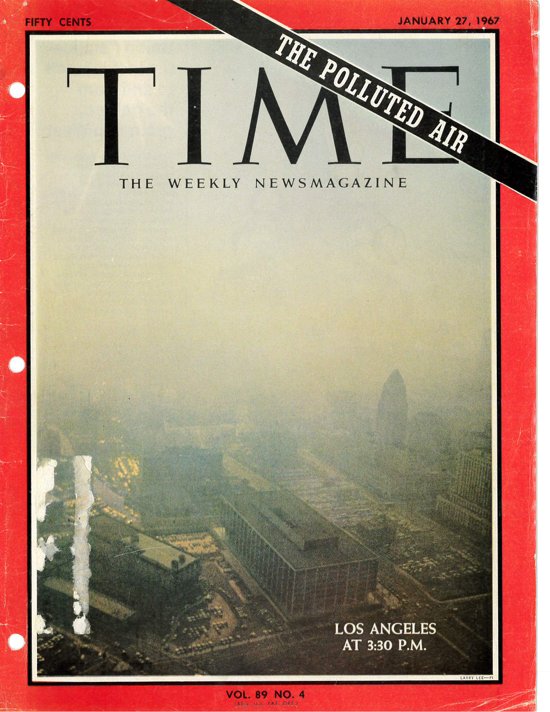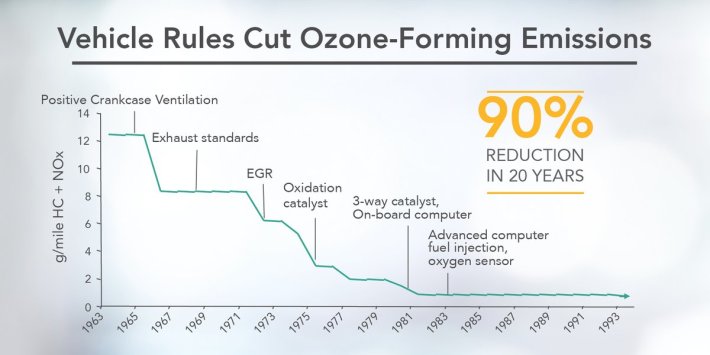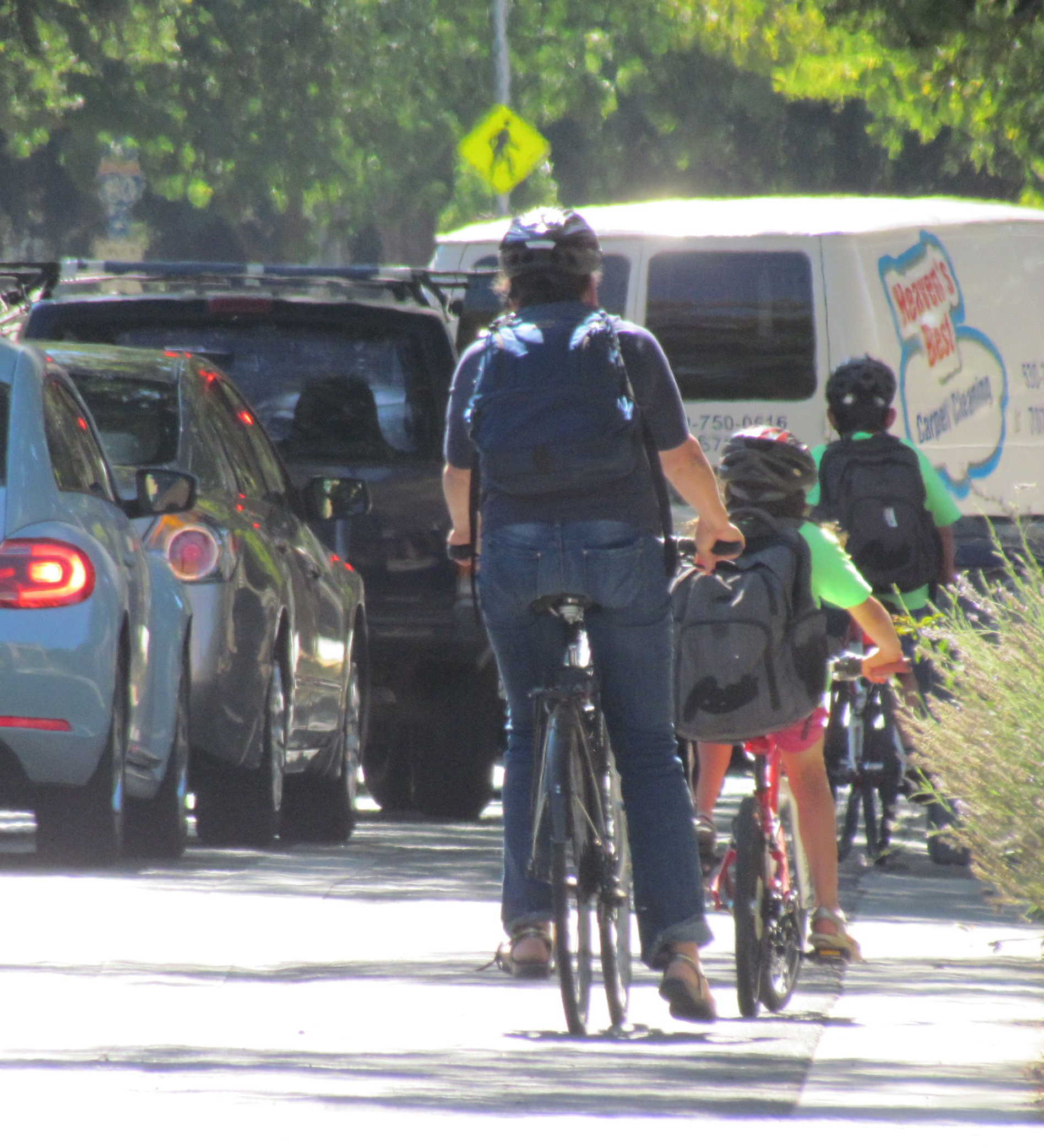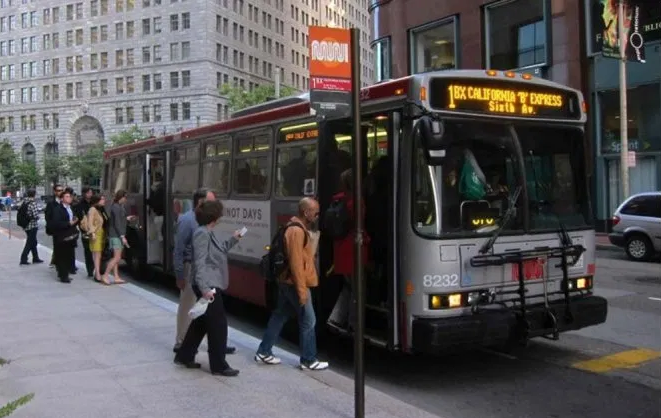Note: GJEL Accident Attorneys regularly sponsors coverage on Streetsblog San Francisco and Streetsblog California. Unless noted in the story, GJEL Accident Attorneys is not consulted for the content or editorial direction of the sponsored content.
California Air Resources Board (CARB) chair Mary Nichols tweeted out a thread yesterday that summed up some of the history behind California's efforts to clean up car emissions. Those efforts are, once again, under threat from the federal government, as the EPA has published plans to loosen standards for vehicle fuel efficiency as well as greenhouse gas emissions.
The proposed rule would also remove California's right to set its own standards--even though the issue of California receiving a waiver to set its own standards has been settled in federal court several times already.
“Once upon a time,” wrote Nichols, “California's fight for cleaner cars emerged from a thick layer of yellowish gray smog with a metallic taste & eye-stinging character.”
Yes, those of us who grew up in the '60s and '70s in L.A. remember that smog really was that bad, pretty much all year round (except for a few rare post-rain days in the winter months). It was “normal” for kids to run around in the brown air of a hot summer afternoon, holding wet rags over our mouths on the worse days--we weren't supposed to just not play, were we? Sore throats were just something to put up with—or so we thought.
It wasn't until 1968 that Governor Ronald Reagan created CARB, and by that time California had already been fighting smog for over twenty years, after it was discovered that vehicle tailpipe emissions were one of the biggest contributors to the bad air.
California beat the nation to the punch; by the time President Richard Nixon passed the Clean Air Act, California's standards were already in place.
“Governor Reagan fought hard to protect California’s authority to set its own clean car standards under the newly passed Clean Air Act, signed by President Nixon a few years after L.A.’s smog made the cover of Time Magazine,” tweeted Nichols.
“Acting under this authority, California led the nation in setting tough regulations for cleaner cars that drove innovative vehicle technology and drastically cut smog over the next five decades.”
“California received a waiver from EPA for each nation-leading advance,” wrote Nichols. And the California regulations were later adopted by the EPA “after they saw how effective and cost-effective they were.”
Not only did the EPA grant waivers to California to go beyond its relatively weak standards, it allowed other states to adopt California's stricter regulations if they so chose—and thirteen other states, plus Washington D.C., have done so. That means the current administration's move to weaken standards and take away California's right to create its own standards would have far-reaching effects not just on air quality in this state, but throughout major parts of the country. According to Nichols, these states together make up about forty percent of the national car market.
This is not the first time California's ability to regulate emissions has been challenged. The state successfully fought back several court cases that sought to end its authority to regulate emissions, including greenhouse gas emissions, as well as fuel economy. You can find a discussion of some of those court cases and their outcomes here.
The Columbia climate law website adds this note to its discussion of one of the cases:
The court also noted that a waiver from the EPA under the Clean Air Act gives this regulation a federal stamp of approval which insulates it from any preemption concerns
In fact, California has already sued the EPA for even suggesting they might roll back fuel efficiency and emissions standards.
Nevertheless, EPA's current proposed rule makes it clear that the agency is planning to reargue these legal concepts all over again. And, consistent with the administration's disdain of science, it is planning to throw out the findings of past analyses. “This proposal is entirely de novo,” says the rule, “based on an entirely new analysis reflecting the best and most up-to-date information available to the agencies at the time of this rulemaking.”
That "new analysis" is getting raked over the coals by experts in the field.
Meanwhile California's, and especially L.A.'s, air--while far from pristine--is so much better than it was forty years ago that it's hard for people who didn't experience it to believe how bad it was. That's due to now-standard regulations like the smog checks that all vehicles are required to undergo--even though people complained loudly when they first went into effect, and still try to get around them. CARB's insistence that there was no reason for vehicles to pollute as much as they did led to the invention and promulgation of “the three-way catalytic converter,” wrote Nichols, an innovation that lead to “the greatest reduction in smog-forming pollution in the history of the internal combustion engine.”
“But we've still got work to do," the tweet thread continued. "California continues to have major air quality problems, with twelve million people [living] in areas with the worst levels of smog in the nation.”
“That’s why California will not back down. We will fight to keep ours and other states' right to continue to set cleaner car standards to clean the air, protect public health and drive innovative, world-leading technology.”
“The end,” Nichols finished, adding a bicep emoji. ![bicep]()
It's a little tricky to navigate the EPA site (surprise!), but comments on the proposed rulemaking can be submitted during the 60-day public comment period, which ends October 2. Look here (for docket number EPA-HQ-OAR-2018-0283) or try here.






